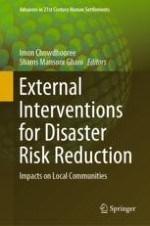2020 | OriginalPaper | Buchkapitel
To ‘Float’ or ‘Not’: Cases of Amphibious Housing and Their Impacts on Vulnerable Communities of Jamaica
verfasst von : Iftekhar Ahmed
Erschienen in: External Interventions for Disaster Risk Reduction
Verlag: Springer Singapore
Aktivieren Sie unsere intelligente Suche, um passende Fachinhalte oder Patente zu finden.
Wählen Sie Textabschnitte aus um mit Künstlicher Intelligenz passenden Patente zu finden. powered by
Markieren Sie Textabschnitte, um KI-gestützt weitere passende Inhalte zu finden. powered by
